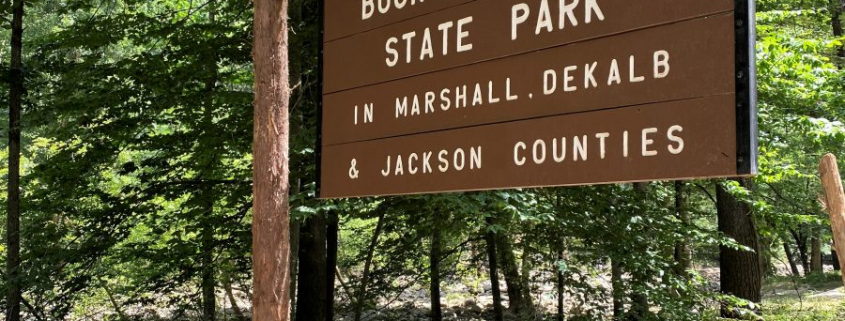Re-Opening Buck’s Pocket State Park
June 15, 2020 I re-visited Buck’s Pocket State Park, approximately 75 miles from my residence, this time for the ribbon cutting re-opening the campground after a three-year major rehabilitation project.
I had first visited the Park in mid-October 2019, viewing the Park only from the overlook, some 800 vertical feet above the campground: https://stevejonesgbh.com/2019/11/04/bucks-pocket-state-park/
Here are two images from that late summer/early fall observation point, which only hinted at the wonders of this special niche Park.
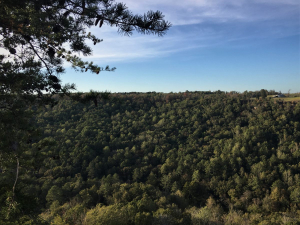
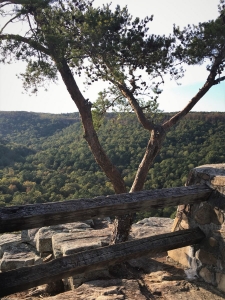
Re-Opening a Special Park
I’m drafting these words July 12, a month beyond entering the deep pocket for the ceremony. I’ll begin with a brief taste of the ribbon cutting. The Park’s name could just as well have been, Ends of the Earth State Park. The feeling of isolation pervades. Even passing commercial air traffic seemed worlds away. Both from the overlook and within the pocket, the depths seemed absent outlet — a sense that water enters and drains into a vertical sink…to an underworld! I was pleasantly surprised to see more than one hundred daring souls find their way into the pocket. Surely they hadn’t consciously entered a zone of no return!
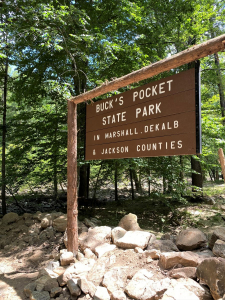
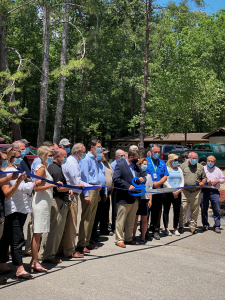
Covid-19 dictated either masks or appropriately distancing. As I so often do, I attempted to capture the moment by focusing on a tree, in this case a black walnut (Juglans nigra) gracing the spot where we gathered, towering above us, back-dropped by cerulean firmament.
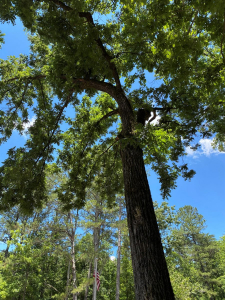
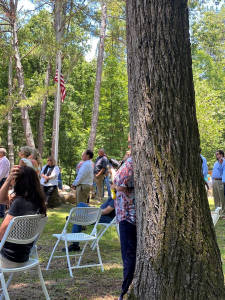
We stood within 150-feet of the pocket’s chief architectural force. No, not the mostly-dry creek-bed, but by the hand of the fierce occasional current evidenced by facets of the scenes below. The bare rocks, a bed without vegetation, suggest that the current flushed through the pocket at least seasonally, and from what I heard from first-hand observers, every time a frog-strangling deluge sends torrents through the narrow valley toward Lake Guntersville. The gnarled sycamore (Plantanus occidentalis; below right) somehow found anchorage at stream center, and has paid the price of repeated batterings for enjoying ample moisture. This view faces the upstream side of the tree, from about ten feet above the bed.
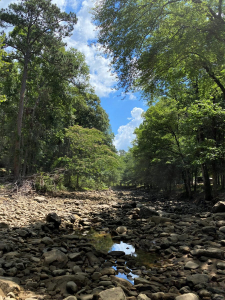
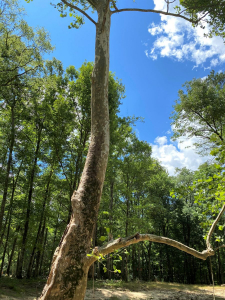
Swinging the camera to stream-bed level, reveals the scars of multiple batterings by water-born boulders, logs, and other debris. How much longer can it withstand its torturings? Its roots cling tightly, holding fast against the tremendous force of water and its burdens. I wonder how many other predecessor trees have likewise attempted to beat the relentless pressures affecting life and living. What are the human stress equivalents to what this sycamore survives? I am fortunate to have found fertile soils, firm anchorage, and relative safety from the ravages of harsher life and living. Let this tree stand as symbol and model for how life can survive seeming unbearable hardship.
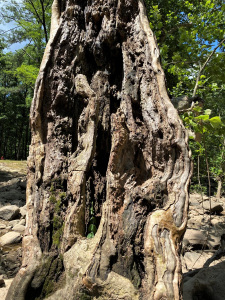
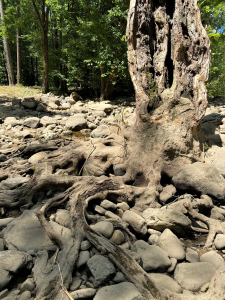
Buck’s Pocket State Park ORV (Off Road Vehicle) Trail
The Alabama State Parks Dirt Pass Trail Crew created and upgraded 6.3 trail-miles for off road vehicle use. The ORV Trail represents the Park System’s commitment to serving recreationists of diverse pursuits. Although I am exclusively a hiking enthusiast, I did hitch a ride with a northern region Parks employee out and back, sampling at least four one-way miles of the total route. Signage is exemplary with plenty of information on laser-routered wooden placards.
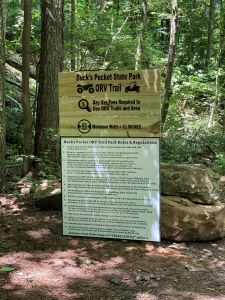
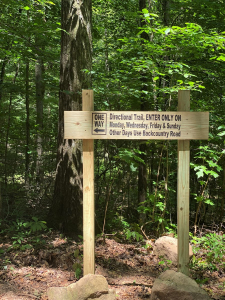
This is my trail transportation paused at the former primitive campground within sight of the Lake Guntersville Buck’s Pocket stream outlet.
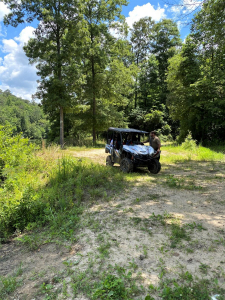
The Dirt Pass Trail Crew created stretches that ranged from gentle six-foot wide dirt roads (both images below) to boulder-strewn hairpin turns that had me hanging on, white-knuckled. I failed to capture those hairier sections. You’ll have to take my word for it.
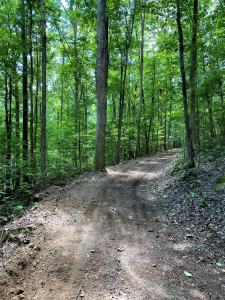
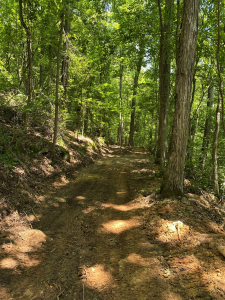
Near the old primitive campground, the Lake backed up the outlet creek, providing pleasant lakeside settings, promising peaceful fishing, and ensuring quiet nights.
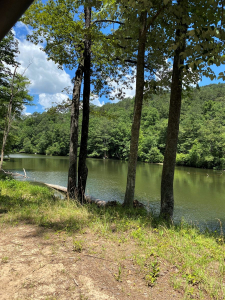
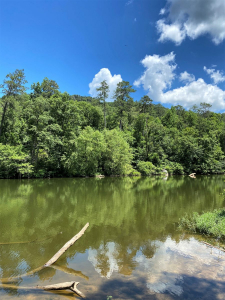
Approaching the main Lake, we stopped where we had a good view ahead (below left). At the far end of this vista is Morgan’s Boat Ramp (below right), from which we looked across the water at the shoreline we had just a few minutes prior passed from left to right to the ramp. Without a lot of text I am communicating that we have progressed from a seeming bottomless pit of no return (The Pocket) to the bountiful shores of Lake Guntersville.
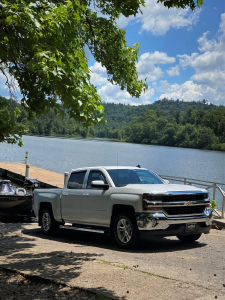
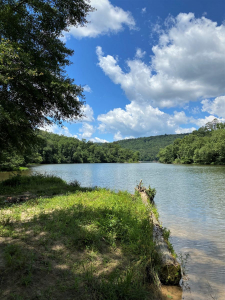
We continued beyond the ramp to where we turned around (below right), looking toward the main body.
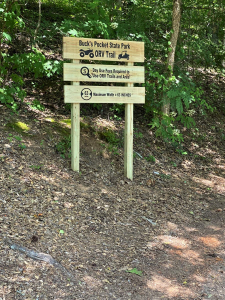
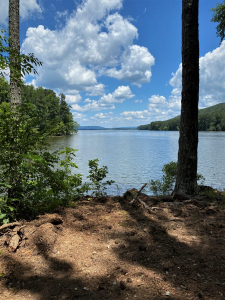
That’s a quick introduction to the ORV Trail. I am pretty sure that I would not want to hike this route and risk being shaken from my wildness experience by the whine and roar of high-powered engines. But to each his own. The intent is not to encourage such mixed use. There are options at Buck’s Pocket for hiking purists. Perhaps on a cooler fall day I will ascend the trail from the headquarters up to the overlook.
Nature’s Visual Treats
We encountered two species of hydrangea along the trail. Oakleaf (Hydrangea quercifolia; below left) and wild hydrangea (Hydrangea arborescens).
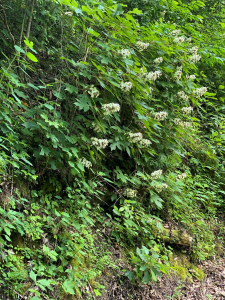
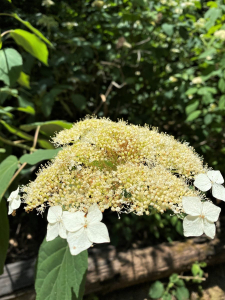
I spotted other delights. Respectful of my driver’s intent to cover the distance and return us to the headquarters for the ceremony, I chose to avoid requesting additional stops.
Instead, I spent some time exploring on foot after the ribbon cutting. The current primitive campground sits just 100 yards from the ribbon cutting site. Here’s the fire pit and concrete picnic table for P-9, a flat spot at the base of the sloping forest.
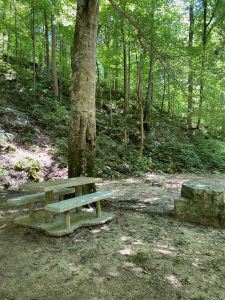
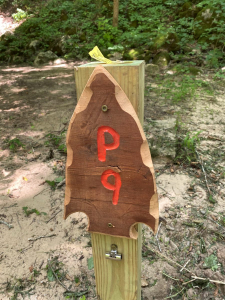
;
Within a five foot radius adjacent to P-9 I found three fern species: northern maidenhair (Adiantum pedatum; below left); broad beech (Phegopteris hexagonoptera; below right); and Christmas (Polystichum acrostichoides; center below the first two).
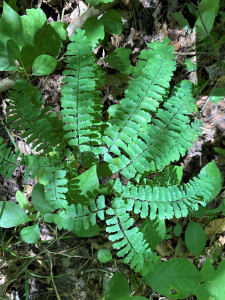

Christmas fern, a lovely evergreen, particularly festive during our dormant season.
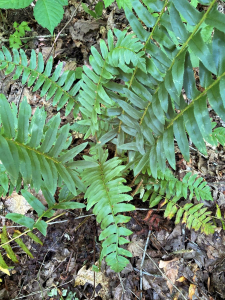
Also at P-9, chinkapin oak (Quercus muehlenbergii; left trunk and right leaf) is a species of the white oak group. The leaf reminds me of chestnut oak (Quercus prinus); its bark differs in many respect from chestnut oak.
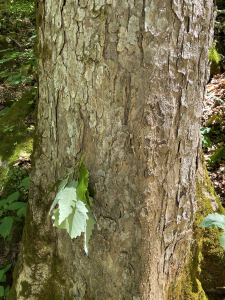
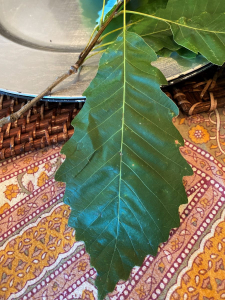
The campsite American beech (Fagus grandifolia; below left) carries a vertical scar, is hollow to the core, and consists of a three-quarters-circumference shell of wood and living cambium. I wondered whether the scar originated from lightning or perhaps from a long-ago campfire that burned this side of the tree, killing the cambium from ground level to several feet above. The chinkapin (below right) likewise evidences the campsite tough life. Hollow (see cavity below the swollen mid-lower trunk) with multiple burl-like wounds and gnarly growth, the tree has endured who knows what physical insult over the years. Regardless of cause, these character blemishes offer campfire story fodder as the evening shadows fall and spookiness takes hold among the more youthful campers.
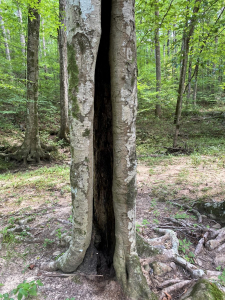
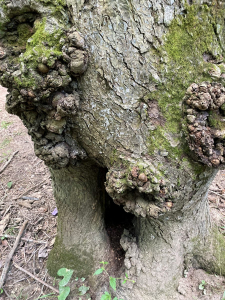
The pocket sees sunrise mid-to-late morning; dusk arrives not long after dinner when the sun seeks the western horizon. Dampness persists; moisture seldom fully departs. Moss grows thick in these shady groves, carpeting this stem near P-9.
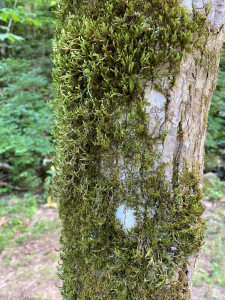
Alabama State Parks stand as a treasure for all of us to enjoy. I am pleased to have been among the first to see the result of incremental state upgrade investment, as well as the secured grant funding to design, locate, and construct the ORV Trail. Many Alabama State Parks enthusiasts and users do not realize that the bulk of revenue supporting the Parks derive not from State coffers but from fees.
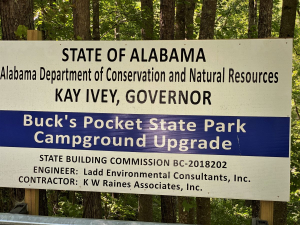
Alabama State Parks Foundation
I’ll remind you that I serve on the Alabama State Parks Foundation Board, in part because of my love of Nature and in recognition for my writing many prior Posts about visiting and experiencing the Parks. I urge you to take a look at the Foundation website and consider ways you might help steward these magical places: https://asparksfoundation.org/ Perhaps you might think about supporting the Parks System education and interpretation imperative: https://asparksfoundation.org/give-today#a444d6c6-371b-47a2-97da-dd15a5b9da76
The Foundation exists for the sole purpose of providing incremental operating and capital support for enhancing our State parks.
Thoughts and Reflections
Alabama’s Parks furnish windows to the incredible richness of life, topography, and waters across our state from the Gulf to the Appalachians. Upon reflection, my trip into The Pocket reveals that:
We are blessed by Nature with limitless beauty, magic, wonder, and awe.
Nature offers multiple benefits, a variety to suit multiple interests… from hikers, mountain bikers, birders, anglers, ORV enthusiasts, and many more.
Inhale and absorb Nature’s elixir. May Nature Inspire, Inform, and Reward you!
Note: All blog post images created & photographed by Stephen B. Jones unless otherwise noted. Please circulate images with photo credit: “©2020 Steve Jones, Great Blue Heron LLC. All Rights Reserved.”
Another Note: If you came to this post via a Facebook posting or by an another route, please sign up now (no cost… no obligation) to receive my Blog Post email alerts: http://eepurl.com/cKLJdL
And a Third: I am available for Nature-Inspired Speaking, Writing, and Consulting — contact me at steve.jones.0524@gmail.com
Reminder of my Personal and Professional Purpose, Passion, and Cause
If only more of us viewed our precious environment through the filters I employ. If only my mission and vision could be multiplied untold orders of magnitude:
Mission: Employ writing and speaking to educate, inspire, and enable readers and listeners to understand, appreciate, and enjoy Nature… and accept and practice Earth Stewardship.
Vision:
- People of all ages will pay greater attention to and engage more regularly with Nature… and will accept and practice informed and responsible Earth Stewardship.
- They will see their relationship to our natural world with new eyes… and will understand more clearly their Earth home.
Tagline/Motto: Steve (Great Blue Heron) encourages and seeks a better tomorrow through Nature-Inspired Living!
Steve’s Three Books
I wrote my books Nature Based Leadership (2016), Nature-Inspired Learning and Leading (2017), and Weaned Seals and Snowy Summits: Stories of Passion for Place and Everyday Nature (2019; co-authored with Dr. Jennifer Wilhoit) to encourage all citizens to recognize and appreciate that every lesson for living, learning, serving, and leading is either written indelibly in or is powerfully inspired by Nature.
I began writing books and Posts for several reasons:
- I love hiking and exploring in Nature
- I see images I want to (and do) capture with my trusty iPhone camera
- I enjoy explaining those images — an educator at heart
- I don’t play golf!
- I actually do love writing — it’s the hobby I never needed when my career consumed me
- Judy suggested my writing is in large measure my legacy to our two kids, our five grand kids, and all the unborn generations beyond
- And finally, perhaps my books and Blogs could reach beyond family and touch a few other lives… sow some seeds for the future


All three of my books (Nature Based Leadership; Nature-Inspired Learning and Leading; Weaned Seals and Snowy Summits) present compilations of personal experiences expressing my (and co-author Dr. Wilhoit for Weaned Seals and Snowy Summits) deep passion for Nature. All three books offer observations and reflections on my relationship to the natural world… and the broader implications for society. Order any and all from your local indie bookstore, or find them on IndieBound or other online sources such as Amazon and LifeRich.

